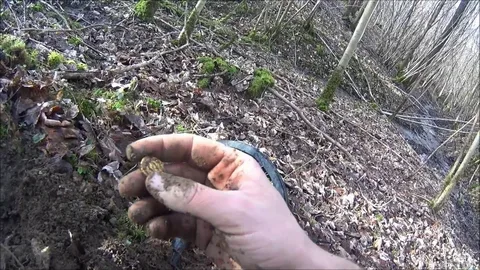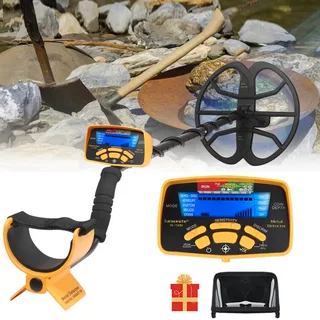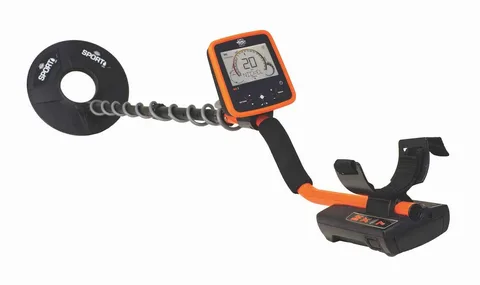Gold and metal detectors are essential tools for treasure hunters, helping them to uncover valuable artifacts and precious metals buried beneath the earth. In this guide, we will explore the best gold and metal detectors available on the market, providing detailed insights into their features, capabilities, and performance. Whether you are a seasoned prospector or a novice enthusiast, these advanced technologies will help you uncover treasures that have been hidden for centuries. Join us as we delve into the world of metal detecting and discover the key to unlocking hidden riches.
“Uncovering Treasures: The Best Gold and Metal Detectors Available” is a comprehensive guide that showcases the top gold and metal detectors on the market. It offers detailed reviews and comparisons of different models, as well as tips for choosing the right detector for specific needs and budgets. The guide also includes essential information about the features and functionalities of each detector, making it a valuable resource for both beginners and experienced treasure hunters. Whether you’re searching for gold nuggets, relics, or coins, this guide can help you find the perfect detector to uncover hidden treasures.
The Best Gold and Metal Detectors for Treasure Hunting

Some of the best gold and metal detectors for treasure hunting include the Minelab CTX 3030, Garrett AT Pro, and Fisher F75. These detectors are known for their advanced technology, high sensitivity, and ability to distinguish between different types of metals. They are also designed to be durable and suitable for various terrains, making them ideal for treasure hunting in different environments. Additionally, these detectors often come with features such as waterproof coils, customizable settings, and advanced target identification capabilities, making them popular choices for both beginners and experienced treasure hunters.
How to Choose the Right Gold and Metal Detector for You

When choosing a gold and metal detector, consider the type of terrain you will be searching in, as well as the frequency and depth at which you want to detect metals. Look for detectors with specific modes for gold prospecting if that is your main focus. Consider the weight and portability of the detector, especially if you will be traveling long distances with it. Additionally, look for detectors with customizable settings and advanced features if you are an experienced detectorist, while beginners may prefer simpler, user-friendly models. Finally, set a budget and compare different models within that price range to find the best option for you.
Maximizing Your Gold and Metal Detector’s Potential

Maximizing the potential of your gold and metal detector requires proper understanding of its features and capabilities. Familiarize yourself with the detector’s settings and modes, and learn how to fine-tune them for different types of metal and ground conditions. Experiment with different coil sizes and shapes to optimize depth and sensitivity. Additionally, keeping the detector well-maintained and using quality batteries can greatly enhance its performance. Finally, continuous practice and experience in the field will also help you get the most out of your detector.
Gold and Metal Detectors: A Beginner’s Guide

Gold and Metal Detectors: A Beginner’s Guide is a comprehensive resource for those looking to get started in the hobby of metal detecting. This guide covers the basics of how metal detectors work, different types of detectors available, and tips on choosing the right one for your needs. It also provides information on how to use a metal detector effectively, including how to properly search for and identify targets. Additionally, the guide offers advice on where to go metal detecting and how to stay safe while doing so. Whether you’re interested in treasure hunting or just want a new outdoor hobby, this guide is a valuable tool for beginners looking to learn more about gold and metal detectors.
The Science Behind Gold and Metal Detection

Gold and metal detection systems work by using electromagnetic fields to detect the presence of metal objects. When an object made of metal comes into the vicinity of the detector, it disrupts the electromagnetic field, causing the detector to produce a signal or alert. The sensitivity and accuracy of the detection depend on the strength of the electromagnetic field and the technology used in the detector. Advanced detectors may also use additional features such as target identification and discrimination to distinguish between different types of metals. Overall, the science behind gold and metal detection involves the principles of electromagnetism and signal processing to identify metal objects in the surrounding environment.
Uncovering History: Using Gold and Metal Detectors for Archaeology
See also: mining equipment for sale
“Uncovering History: Using Gold and Metal Detectors for Archaeology” is a book written by Dr. Duncan Pearson, a renowned archaeologist and metal detecting expert. In this book, Pearson explores the use of metal detectors in archaeological research and excavation, highlighting their importance in uncovering historical artifacts and sites. The book delves into the techniques and methods used in metal detecting for archaeological purposes, as well as the impact of such technology on the field of archaeology. Pearson also discusses the ethical considerations and challenges associated with using metal detectors in archaeological research. Overall, the book provides valuable insights into the role of metal detectors in uncovering and preserving history.
Top 5 Tips for Success With Your Gold and Metal Detector
1. Research Your Area: Before heading out with your gold and metal detector, take the time to research the area you plan to search. Look for locations with a history of gold mining or significant metal findings.
2. Learn Your Detector: It’s crucial to thoroughly understand how to operate your specific gold and metal detector. Familiarize yourself with its features, settings, and capabilities to maximize your chances of success.
3. Use the Right Equipment: Investing in quality equipment can make a significant difference in your success rate. Ensure you have the proper tools, such as a good set of headphones and digging implements, to aid in your search.
4. Be Patient and Persistent: Success with a gold and metal detector often requires patience and persistence. Keep a positive mindset and continue to hone your skills with regular practice and outings.
5. Join a Community: Engaging with other metal detecting enthusiasts can provide valuable insights, tips, and support. Consider joining a local club or online forum to connect with experienced individuals who can help elevate your skills and success rate.
Exploring the Outdoors: Gold and Metal Detection in Nature
Exploring the Outdoors: Gold and Metal Detection in Nature is a hobby and recreational activity that involves using metal detectors to search for natural gold nuggets and other metal objects in outdoor environments such as rivers, streams, and mountainous areas. Participants typically use specialized equipment designed for prospecting and metal detection to locate valuable items in these natural settings. This activity can be both a leisurely pastime and a potentially lucrative pursuit for those who are able to uncover valuable metals. It also provides an opportunity for individuals to immerse themselves in nature and explore the great outdoors while searching for hidden treasures.
The Evolution of Gold and Metal Detection Technology
The evolution of gold and metal detection technology has been a continuous and fascinating journey. From the early days of using simple tools and techniques to the advanced and sophisticated devices available today, there has been a significant advancement in the field.
Historically, metal detection was a cumbersome and time-consuming process, often relying on trial and error methods. However, with the advent of modern technology, metal detectors have become more accurate, sensitive, and efficient. Today, metal detectors use a range of technologies including electromagnetic induction, pulse induction, and beat frequency oscillation to detect various types of metals, including gold.
The development of advanced signal processing algorithms, high-frequency detection, and improved sensitivity has greatly enhanced the capabilities of metal detectors, making them more reliable and effective in locating gold and other valuable metals. Additionally, the integration of GPS technology and digital mapping has enabled users to track their findings and analyze the data more effectively.
Furthermore, the miniaturization of electronic components and the use of lightweight materials have made metal detectors more portable and user-friendly. This has allowed for easier and more efficient exploration of remote and challenging terrains.
Overall, the evolution of gold and metal detection technology has significantly improved the capabilities and usability of metal detectors, making them an indispensable tool for prospectors, archaeologists, and hobbyists alike.
Gold Rush: Prospecting With the Latest Metal Detectors
Gold Rush: Prospecting With the Latest Metal Detectors is a television show that follows a group of gold prospectors as they use the latest metal detecting technology to search for gold in various locations. The show features interviews with experts in the field, demonstrations of how the metal detectors work, and the prospectors’ attempts to uncover valuable gold deposits. The series provides viewers with valuable insights into the techniques and tools used in modern gold prospecting.

